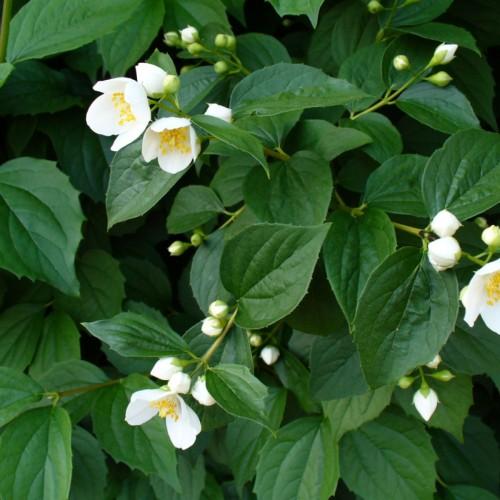
mock orange
Philadelphus 'Belle Etoile'
Cycle:
Perennial
Watering:
Average
Hardiness Zone:
5 - 8
Flowers:
Flowers
Sun:
Full sun,part shade
Leaf:
Yes
Growth Rate:
High
Maintenance:
Low
Drought Tolerant:
Yes
Care Level:
Medium
watering
For optimal growth, Mock Orange (Philadelphus Belle Etoile) should be watered thoroughly but infrequently. Water once a week in the summer and once every 2 weeks in the winter. When watering, be sure that the soil is completely saturated. Allow any excess water to drain away. Do not water again until the top 2-3 inches of soil has dried out. The ideal soil for this species is moist, but not soggy.
sunlight
Mock orange (Philadelphus 'Belle Etoile') prefers to be grown in full sun in order to thrive. It should receive at least 6 hours each day to maintain its optimal growth and flowering. In areas where temperatures are very hot, the plant may require partial shade during the hottest times of the day. It is also best to provide afternoon shade in climates with high humidity during mid- and late summer months.
pruning
Mock orange (Philadelphus 'Belle Etoile') should be pruned during the late winter and early spring months. To ensure proper growth and optimal bloom, it is important to prune back any dead branches, and also thin out any branches that have grown too close together. This will help encourage more air and light to circulate within the plant. It is also important to remove any overly-long branches or unruly growth. Mock oranges should be cut back by no more than 1-third of its size, as excessive pruning can stunt the growth of the shrub. By pruning in the late winter or early spring, this will allow for the new growth to emerge from early spring through mid-summer with the full bloom occurring at the start of summer.
